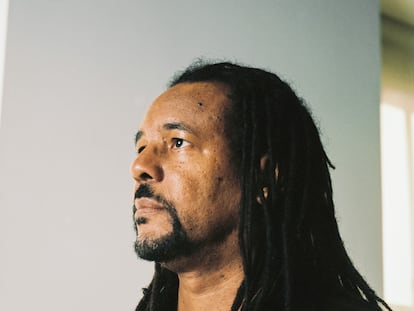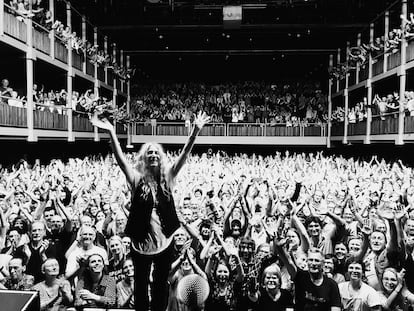Audrey Hepburn: The myth of the modern woman was born in ‘Breakfast at Tiffany’s’
The book ‘Fifth Avenue, 5 A.M.: Audrey Hepburn, Breakfast at Tiffany’s, and the Dawn of the Modern Woman’ analyzes the influence of the film adaptation of Truman Capote’s novel about the creation of the independent, liberated female
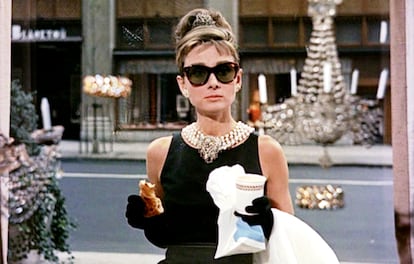

The definition of what constitutes a star in 21st-century Hollywood has changed. “And I’m sorry to report, [it’s] for the worse [...] The real reason certain actors become stars and others do not is regrettably not so glamorous… studios manufactured stars to suit the fears and fantasies of the day, giving faces to paradigm shifts, and therefore historical consequence to their chosen personae. And so it has always been. Since the era of Hollywood’s first stars, American moviegoers have been devouring a steady dosage of self-image.” Thus begins Californian journalist Sam Wasson’s Fifth Avenue, 5 A.M.: Audrey Hepburn, Breakfast at Tiffany’s, and the Dawn of the Modern Woman. The book — which was written in 2010 and revised in 2021 — focuses on the movie’s creation of a female archetype that transcended Hepburn herself and has little to do with the Holly Golightly described by Truman Capote in his original novel. The film made Hepburn herself a huge star, and audiences viewing “Audrey’s Holly Golightly in 1961 experienced, for the very first time, a glamorous fantasy life of wild, kooky independence and sophisticated sexual freedom; best of all, it was a fantasy they could make real,” argues Wasson.
Until the release of Breakfast at Tiffany’s, only bad girls enjoyed sex in Hollywood movies. “With few exceptions, good girls in the movies had to get married before they earned their single fade to black... But in Breakfast at Tiffany’s, all of a sudden — because it was Audrey who was doing it — living alone, going out, looking fabulous, and getting a little drunk didn’t look so bad anymore,” Wasson explains. “Being single actually seemed shame-free. It seemed fun.”
Still, the major social change that the film brought about nearly didn’t happen. Capote himself was the first to torpedo the movie and he never stopped complaining about the adaptation. The author had wanted to bring the story to the screen when he wrote the novel in 1958, but that spirit was impossible to capture in the film industry of the day. There were other problems as well: Hepburn initially rejected the role, censorship almost sank the script, the producers did not want to use the song Moon River, George Peppard never understood the story (in reality, he didn’t comprehend that he wasn’t its star), Blake Edwards filmed two endings because he did not know how to finish the movie and Paramount generally suffered during production because everything seemed aligned against the film.

Hepburn’s participation in the film makes the whole underlying message of Breakfast at Tiffany’s acceptable. She received the offer to star in the movie when she was at the first major crossroads in her career, which had been going full-steam ahead since poor nutrition during World War II had prevented her from becoming physically fit and thriving as a dancer, her dream. Hepburn’s first impulse, fueled by her manipulative husband, Mel Ferrer, was to turn down the role. In the end, she accepted the part for several reasons, one of which was George Axelrod’s script, which might have been of lesser importance in the original decision but ultimately proved crucial to her success.
Axelrod was stuck in his career. After writing The Seven Year Itch, Rally Round the Flag, Boys! and Will Success Spoil Rock Hunter?, the screenwriter was defined by vulgar jokes — “Boobs and boobs. Dumb guys and curvy girls” — as Wasson notes in Fifth Avenue, 5 A.M. At the time, Billy Wilder’s The Seven Year Itch was defined as an “I want to, but I can’t” film. If Axelrod’s original theater play was risqué in depicting the adultery of a guy whose family is away for the summer, by taking it to the silver screen and turning that sexual drive into a dream to evade censorship, Wilder and Axelrod watered down the message.
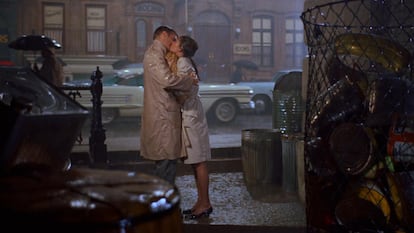
The screenwriter understood what propelled Breakfast at Tiffany’s: sophistication, wit and progressive sensibility. He was not the first person hired to do the adaptation, but he received the assignment because he created a traditional romance with sex for the new generation, which Capote’s novel concealed. He also understood that if in Doris Day’s films the conflict that hinders the love story is desire (there are no relations until the wedding), in Breakfast at Tiffany’s the conflict would have to be changed: Holly Golightly sleeps with men for money (in the movie, she becomes strictly straight as opposed to her bisexuality in the novel), so the obstacle became an issue of commitment. The two protagonists do not end up in bed right away because Paul Varjak (Peppard), like Golightly, has sex for money; he is a gigolo. “He can’t afford to pay for a night with her, and she can’t afford to pay for a night with him... So their conflict? Leaving a steady life of fiscal security for one of love,” Wasson muses. “At last, Axelrod would pitch a sex comedy with sex.”
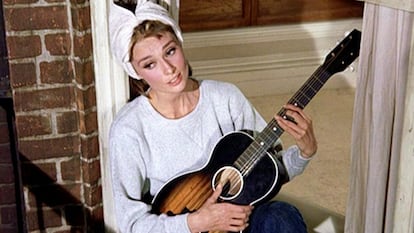
Many of Holly’s characteristics from the novel were jettisoned in the movie to highlight her dreamy side. The movie emphasized her innocent past as a girl from Texas and eliminated her pregnancy and abortion, as well as her trips abroad to accompany men for work. But her figure remained the same: Holly Golightly was “a skinny girl with a ‘flat little bottom,’ ‘hair sleek and short as a young man’s,’ and ‘a face beyond childhood, yet this side of belonging to a woman.’ Capote had wanted Marilyn Monroe, who exuded sex at every turn, to play the part, but the producers understood that only someone like Hepburn would make the censors allow the film.

In an interview with Playboy after the film premiered, Capote said that “The film became a mawkish valentine to New York City and Holly and, as a result, was thin and pretty, whereas it should have been rich and ugly. It bore as much resemblance to my work as the Rockettes do to Ulanova.” True, but in 1961 such an adaptation could not have been done. Nor did Capote appreciate that Axelrod and Blake Edwards, who also directed the film, had captured the zeitgeist of the United States.

At the turn of that decade, there were already Holly Golightlys on the streets of the Big Apple. “With that film, we became grownups. This was not an age of innocence anymore. Suddenly we had the ability to come edging out in the open with sex. It was getting to be the sixties,” wrote critic Judith Crist. This new breed of cinema also included The Apartment and Splendor in the Grass.
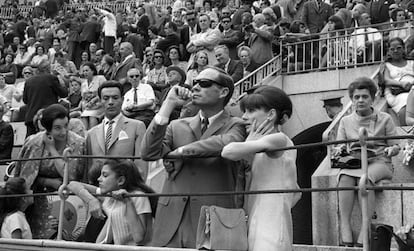
Fifth Avenue, 5 A.M. emphasizes the sentiment by including the statements and memories of women who were beginning their professional careers at the time. For example, journalist and activist Letty Cottin Pogrebin, who founded Ms. magazine with legendary feminist Gloria Steinem in 1971, was just starting her first career as an executive in the publishing world: “When Breakfast at Tiffany’s came out, it blew me away. In those years, I really considered myself an alter ego of Holly Golightly. First of all, because she was so unlike the usual Hollywood caricature of a woman. She was a woman you wanted to be. Of course, she didn’t have a profession and I was career oriented, so that was a little troublesome, but the fact that she was living on her own at a time when women simply weren’t, was very validating to me. It was very affirming.”
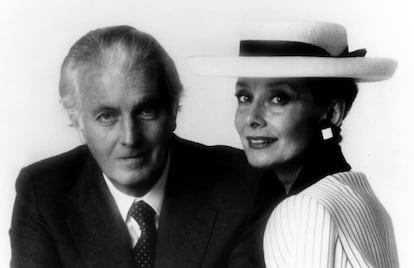
And then there was the simple, perfect black dress designed by Hubert de Givenchy, Hepburn’s couturier since Sabrina (1954). “Givenchy and Audrey gave us a very realistic, very accessible kind of class,” designer Jeffrey Banks says in the book. “All of a sudden, in Breakfast at Tiffany’s, chic was no longer this faraway thing only for the wealthy.” Givenchy based his dresses on the female figure as it was, not idealizations of it. “That was a kind of first in fashion and it took glamour from the remote and unattainable and made it practical. After Tiffany’s, anyone, no matter what their financial situation, could be chic everyday and everywhere,” Banks adds. Previously, black clothing had been limited to night and mourning periods. Because of the little black dress’s efficient simplicity, thousands of urban working women bought one or had one made for them in the years that followed: it was the uniform of the new woman.
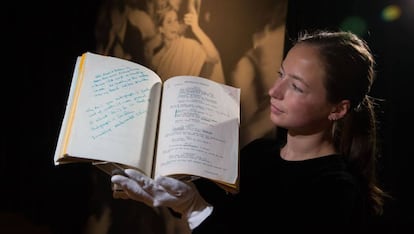
After the film’s release, Blake Edwards could finally do the type of filmmaking he wanted. The party scene in Breakfast at Tiffany’s hints at the style he would develop years later in The Party; Axelrod (who argued with Edwards over the compromise ending of Breakfast at Tiffany’s, which audiences ended up loving) wrote librettos more aligned with his own tastes like The Manchurian Candidate; Henry Mancini’s jazz would be considered the epitome of cool (and his Moon River, with lyrics by Johnny Mercer, became an instant classic), and Hepburn divorced Ferrer and filmed other masterpieces, such as Two for the Road.
Named after the first line in the movie’s script, Fifth Avenue, 5 A.M. also discusses those who later disappeared, like Peppard, although he subsequently enjoyed success on television with The A-Team. The book also addresses Capote’s friendless demise. Finally, it discusses the legendary film’s blemishes (for instance, the character of the racist Japanese neighbor, played by Mickey Rooney, which was one of Edwards’s initiatives). But above all it argues that the iconic Audrey-as-Holly character changed Western women’s lives by showing them independence on screen and opening the door for them in real life.
Sign up for our weekly newsletter to get more English-language news coverage from EL PAÍS USA Edition
Tu suscripción se está usando en otro dispositivo
¿Quieres añadir otro usuario a tu suscripción?
Si continúas leyendo en este dispositivo, no se podrá leer en el otro.
FlechaTu suscripción se está usando en otro dispositivo y solo puedes acceder a EL PAÍS desde un dispositivo a la vez.
Si quieres compartir tu cuenta, cambia tu suscripción a la modalidad Premium, así podrás añadir otro usuario. Cada uno accederá con su propia cuenta de email, lo que os permitirá personalizar vuestra experiencia en EL PAÍS.
¿Tienes una suscripción de empresa? Accede aquí para contratar más cuentas.
En el caso de no saber quién está usando tu cuenta, te recomendamos cambiar tu contraseña aquí.
Si decides continuar compartiendo tu cuenta, este mensaje se mostrará en tu dispositivo y en el de la otra persona que está usando tu cuenta de forma indefinida, afectando a tu experiencia de lectura. Puedes consultar aquí los términos y condiciones de la suscripción digital.
More information
Archived In
Últimas noticias
New York enters the era of Zohran Mamdani
Welcome to the post-religion era: The idea of Christianity as the absolute truth has become obsolete
‘I thought you would like it’: The risky sexual practice popularized by TV shows and TikTok
The digitalization of tourism: ‘They promise experiences and gave us the worst possible one’
Most viewed
- Sinaloa Cartel war is taking its toll on Los Chapitos
- Reinhard Genzel, Nobel laureate in physics: ‘One-minute videos will never give you the truth’
- Oona Chaplin: ‘I told James Cameron that I was living in a treehouse and starting a permaculture project with a friend’
- Why the price of coffee has skyrocketed: from Brazilian plantations to specialty coffee houses
- Silver prices are going crazy: This is what’s fueling the rally
